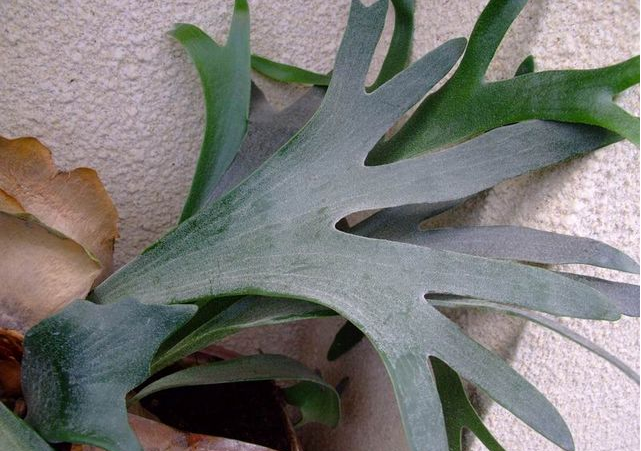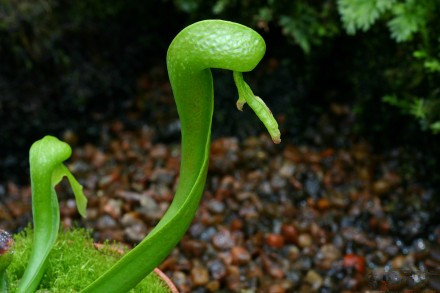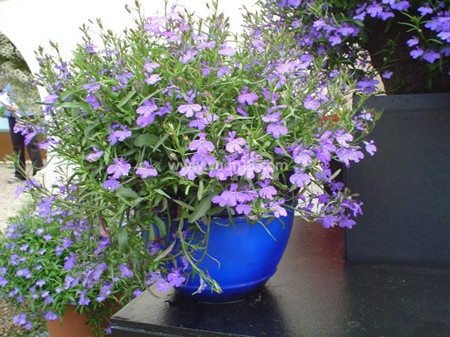Breeding methods and principles of Ceratopteris Dryopteris
[ramet time]: it is best to do it after the soil is thawed in early spring (February, March).
[ramet method]: take the mother plant out of the flowerpot, shake off the excess potted soil, separate the root system as much as possible, and cut it into two or more plants with a sharp knife. Each plant should have a considerable root system, and its leaves should be pruned properly to facilitate survival.
[disinfection in a basin]: soak the divided plants in 1500 times chlorothalonil solution for five minutes, then take out cold and dry, and then put on the basin. You can also irrigate the root with chlorothalonil immediately after potting.

[management after ramet]: after filling the pot, the ramets were irrigated with roots or irrigated for a second time. Because its root system is greatly damaged and its water absorption capacity is very weak, it takes about 3-4 weeks to recover new roots, so it is necessary to control watering within 3-4 weeks after ramet, so as to avoid rotting roots, but the transpiration of its leaves is not affected. In order to maintain the water balance of leaves, it is necessary to spray the leaf surface one or three times a day (more spraying at high temperature, less spraying at low temperature or no spraying). Don't fertilize it these days. After the split, also pay attention to the sun is too strong, should be placed in the shade shed for maintenance.
[pot]: when the seedlings are installed in the basin, put a coarse-grained matrix or ceramsite 2cm thick at the bottom of the basin as a filter layer, sprinkle a layer of fully mature organic fertilizer as a base fertilizer with a thickness of about 1cm to 2cm, then cover it with a layer of substrate, which is about 1cm thick, and then put in the plant to separate the fertilizer from the root system and avoid burning roots.
The substrate used in the pot can be selected as follows. Vegetable garden soil: slag = 3RU 1; or garden soil: medium coarse river sand: sawdust = 4RU 1RU 2; or a species in paddy soil, pond mud, rotten leaf soil. Or peat + perlite + ceramsite = 2 + 2 + 1; vegetable garden soil + slag = 3 + 1; peat + slag + ceramsite = 2 + 2 + 1; sawdust + vermiculite + medium coarse river sand = 2 + 2 + 1. Pour water after the basin is finished, and keep it in a shaded environment for maintenance.
[humidity management]: like the humid climate environment, the relative air temperature of the growing environment is required to be 60-75%.
[temperature management]: the optimum growth temperature is 18 degrees Celsius ~ 30 degrees Celsius, avoid cold frost, the overwintering temperature needs to be kept above 10 degrees Celsius, and enter a dormant state when the temperature drops below 4 degrees Celsius in winter. If the ambient temperature is close to 0 degrees Celsius, will die of frostbite. Culture methods and matters needing attention of Dryopteris Dryopteris
Latin name Platycerium wallichii Hook.
Binomial Platycerium wallichii
The plant kingdom.
Pteridophyta
Pteridopteris
Cephaloptera
Ceratopteridaceae
Genus Ceratopteris
Distributed in tropical eastern Australia, New Guinea, Little Sunda Islands, Java, Yunnan, China
English name Staghorn fern
Antler fern (scientific name: Platycerium wallichii Hook.), also known as Milu antler fern, bat fern, antler fern, belongs to Polynesia and other tropical regions of eastern Australia, belonging to epiphytic ornamental fern. Its spore leaves are very chic, similar to the antlers of sika deer.
1. Morphological characteristics.
Epiphytes. Rhizome fleshy, short and recumbent, densely scaly; scales light brown or grayish white, middle dark brown, hard, linear, 10 mm long and 4 mm wide. Leaves 2-row, dimorphic; basal sterile leaves (humus leaves) persistent, thickly leathery, lower fleshy, up to 1 cm thick, upper thin, erect, sessile, Adnate to trunk, up to 40 cm long, nearly equal in length and width, apex truncate, irregular, 3-5 times forked, lobes subequal, obtuse or pointed, entire, main veins raised on both surfaces, leaf veins inconspicuous, both surfaces sparsely stellate hairy, initially green, soon withered, brown. Normal fertile leaves often grow in pairs, drooping, grayish green, 25-70 cm long. Divided into 3 main lobes of unequal size, the base is cuneate, decurrent, subsessile, the medial lobe is the largest, forks into narrow lobes many times, the middle lobe is smaller, both are fertile, the lateral lobes are the smallest, sterile, the lobes are entire, the whole body is covered with gray-white stellate hairs, and the leaf veins are thick and prominent. Sporangia scattered below the recess of the first bifurcation of the main lobe, below the base, initially green, then yellow; septum gray-white, stellate hairs. The spores are green.
2. Growth habits
Antler fern, also known as antler fern, likes warm and humid environment, is afraid of strong light, and it is better to scatter light. The temperature in winter is not lower than 5 ℃, and the soil is suitable for loose rotten leaves. With the alternation of generations, both sporophyte and gametophyte live independently.
The distribution area is tropical monsoon climate, hot and rainy. The average annual temperature is 22.6 ℃, the average January temperature is 15 ℃ 17 ℃, the extreme minimum temperature is not less than 5 ℃, the extreme highest temperature is 39.5 ℃, the annual precipitation is about 2000 mm, and the relative humidity is not less than 80%. Often epiphytic in chukrasia tabularis var.velutina (Wall.) King, Albizia chinensis (Osh.) Merr., Ficus benjamina L. The trunks and branches of the seasonal rain forest, which are the main body, can also be attached to the edge of the forest, the trunk of the sparse forest or the dead standing wood. Antler fern uses humus leaves to accumulate fallen leaves, dust and other substances as nutrition. At the beginning of the rainy season, two new humus leaves and two fertile leaves grow on the top of the short stem. The humus leaves of the previous year withered and rotted in the same year, while the fertile leaves did not gradually dry up and fall off until the next spring.
Culture methods and matters needing attention of Dryopteris Dryopteris
The plant kingdom.
Pteridophyta
Pteridophyta
Pteridacea
Ceratopteridaceae
Genus Ceratopteris
Also known as Ceratopteris javanica, a large living fern, the rhizome of the long-leaf Milu horn fern runs across, and the shape of the scales is varied and serrated. The leaf is dimorphic, and the leaf at the base is round, reniform, close to the attachment, initially green, then brown, entire or wavy, collecting leaves for humus, collecting nearby insect carcasses, fallen leaves, Rain Water, etc., as their own nutrients. The other leaves are in the shape of sika antlers, which are upright at first, droop a little longer and up to 100 cm long; the leaves are bifurcated several times, and the back is hairy and velvet. The sporangium group is longer than the back of the leaf apex, cushion-like, without spore membrane.
- Prev

Key points of cultivation of cobra bottle grass
Cobra bottle grass is one of the genera of the family Cryptomellidae, which is a kind of insectivorous plant, mainly distributed in northern California and Oregon. Cobra bottle grass is a very well-known insectivorous plant species, named for its resemblance to cobras, and is the target of many players' collections. The left and right sides of their bottle caps stick together.
- Next

Herbal flowers suitable for autumn sowing
Most of the true flower friends like to sow their own seeds. When the hand-cultivated flowers are given to relatives and friends, the bottom of my heart is a kind of pride. Among the annual flowers and perennial herbs in herbaceous flowers, many adopt autumn sowing method to cultivate flower seedlings.
Related
- Fuxing push coffee new agricultural production and marketing class: lack of small-scale processing plants
- Jujube rice field leisure farm deep ploughing Yilan for five years to create a space for organic food and play
- Nongyu Farm-A trial of organic papaya for brave women with advanced technology
- Four points for attention in the prevention and control of diseases and insect pests of edible fungi
- How to add nutrient solution to Edible Fungi
- Is there any good way to control edible fungus mites?
- Open Inoculation Technology of Edible Fungi
- Is there any clever way to use fertilizer for edible fungus in winter?
- What agents are used to kill the pathogens of edible fungi in the mushroom shed?
- Rapid drying of Edible Fungi

